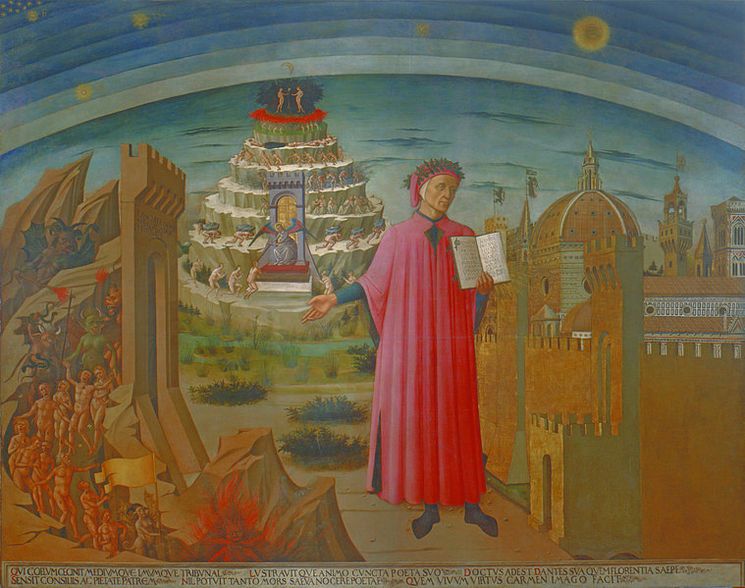Out of all the musical intervals, the one that has been steeped in ominous superstitions since the Middle Ages is the tritone. This augmented fourth or diminished fifth is the distance of three whole steps from one note to another.
That interval sounds as though it is not finished, as if it has one more notch to go before it resolves. This tense, unsettled dissonance gave rise in medieval times to tritone superstitions associated with the devil, which later proved popular in 19th-century music.

del Fiore in Florence.
A brief background as to how the tritone ended up with such a dubious reputation has to do with church music. The ecclesiastical chants of the Catholic Church started out as unison or monophonic plainsongs without accompaniment in free-flowing tempo that corresponded to the Latin text.
The chants spread throughout Europe and were codified during the 590-604 reign of Pope Gregory I to unify their usage within churches. As a result, this style of music became known as Gregorian chant.
In the ninth century, chants became two-voiced with the same melody sung simultaneously at the original pitch and at an interval of either a fourth, fifth or octave. This parallel organum created a pure sound without any dissonance.
It added to the overall ethereal or spiritual presence within the European cathedrals. These were stable, consonant intervals while the restless grating tension of the tritone was considered unsuitable for church music.
This restlessness became associated with things that were forbidden. In the early 18th century, it was labeled as the diabolus in musica or the devil in music. Composers used the tritone sparingly and in specific circumstances, but it was during the 19th-century Romantic period that composers unabashedly used the Devil’s interval as a main theme.
Two such works are examples that relate directly to medieval times and superstitions: Apres une lecture du Dante: Fantasia quasi sonata, the Dante Sonata, by Franz Liszt and Danse macabre, Op. 40, by Camille Saint-Saëns.
Liszt composed the Dante Sonata in 1849 as a piano solo. This single movement work was based on an epic poem from the Middle Ages by Dante Alighieri called The Divine Comedy.
Dante started this work around 1308 and finished a few months before his death in 1321. It is written in first person but also serves as an allegory warning society to mend its ways. Its three sections represent a journey through Christian afterlife: Inferno (hell), followed by Purgatorio (purgatory) and ending with Paradiso (heaven).
The opening of Liszt’s piano sonata consists of tritones played in octaves as the music unfolds in its descent to hell. The first descent is from A to E-flat, tumbling down a three-octave range before reaching a few foreboding chords.
The tritone cascade repeats from C to F-sharp and a third time from E-flat to A leaping down, at first, then up. As the work progresses, this descending pattern is evident throughout as evil is finally left behind and the soul ascends to heaven.
Approximately 26 years after Dante completed The Divine Comedy, the Black Death invaded Western Europe. Reports of the plague appeared as early as 1330 in China and reached the port city of Messina in Sicily through ships returning via the Black Sea in 1347. Within five years, it wiped out more than 20 million people.
Many people viewed this plague as a sign that God was punishing them. Rich and poor alike were united by death.
The Danse Macabre was not one specific work, but an entire genre of art and music that was an allegory about death being universal. Like The Divine Comedy, it served as a wake-up call for society to mend their ways.
Camille Saint-Saëns composed his Danse macabre, Op. 40, in 1874 as a tone poem for full orchestra and solo violin. Based on a poem by Henri Cazalis, the violin begins with tritone chords, thus establishing the grating dissonance associated with the devil or, in this case, Death.
He summons the skeletons at midnight and they start to dance. The music intensifies until dawn when the sound of Death’s violin fades and the skeletons vanish.
There are numerous examples of the tritone representing something negative, fearful, or evil in music. It can also represent the questionable or unfinished. It lends itself to that by sounding unsettled or unresolved.
It was the medieval period though that produced the tritone superstitions which proved popular during the 19th century and continue to be an important influence in music.
